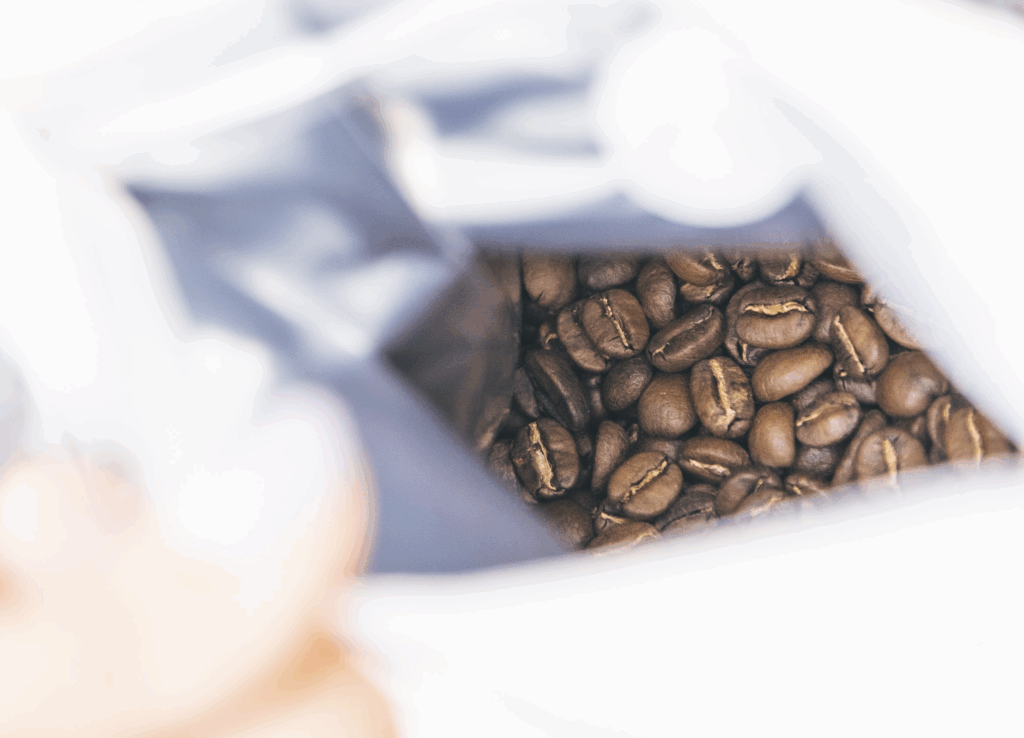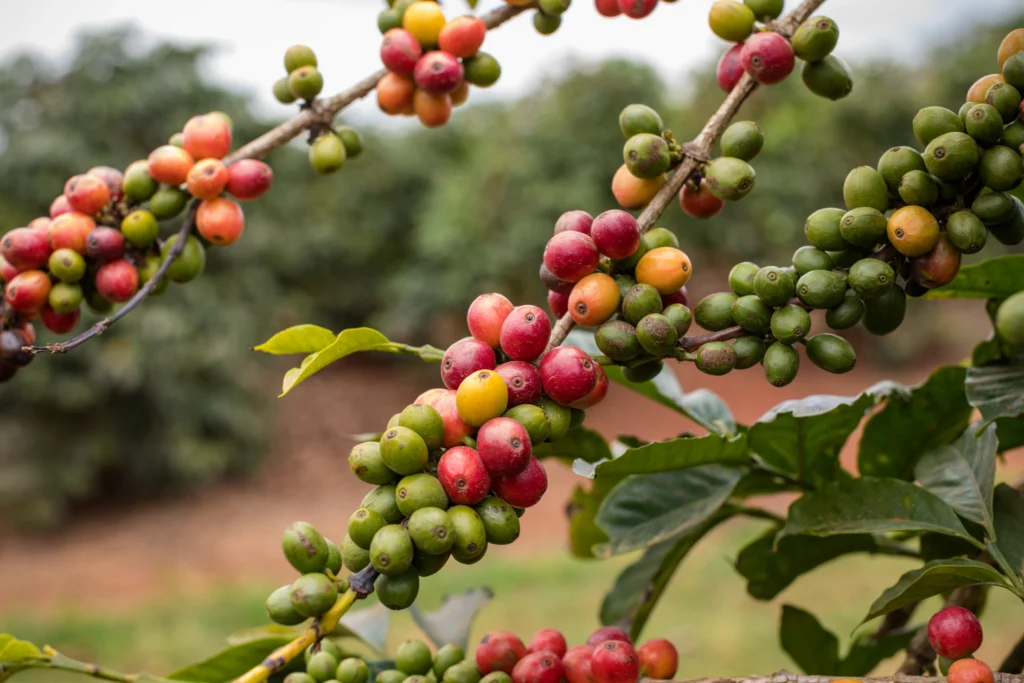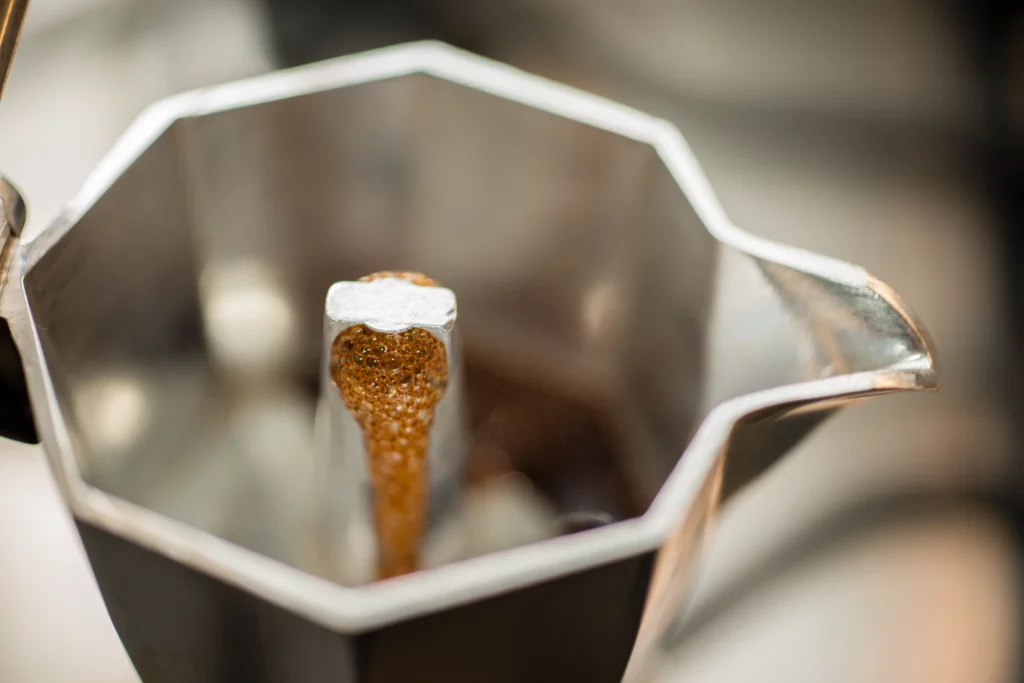
One day at the market, we had an interesting encounter. When things are calmer and we don’t have to make coffee nonstop, we usually chat with passers-by, let them smell our different coffees, compare impressions, and spend time in sensory adventures and engaging conversations. But this time, something curious happened: a gentleman, without even smelling anything, firmly declared that “all coffees smell the same,” and instead we should talk about something more important—the length of roasting.
We found out that, according to him, we roast our coffee for too short a time and that it should be roasted for at least 16 minutes. Why?
“Because then the harmful chlorogenic acids will disappear, and you can drink as much coffee as you want.”
Dear friends, from this statement we can immediately recognize the distributors of one particular network marketing coffee brand. We won’t mention the name here, but instead let’s take a closer look at what actually happens with chlorogenic acids in coffee—and whether they really are so bad.
Let’s start with health.
Chlorogenic acids are natural polyphenols. Antioxidants. The very same kind we hear about daily in articles and health blogs, the ones that are supposedly so valuable to include in our diet! Chlorogenic acid might sound like something out of a chemistry lab, but remember the old joke about dihydrogen monoxide (H₂O), which sounds even scarier, yet is essential to life.
Now, having dealt with the “health” angle, let’s think about where these claims about the need to eliminate chlorogenic acids might come from.
First, let’s recall: in nature, nothing exists “just because.” Every part of a natural cycle has its role, its purpose. The same goes for chlorogenic acids—they’re not in the coffee fruit to amuse us, but because they’re crucial for the fruit’s development.
In unripe coffee cherries, chlorogenic acids are at high levels. The reason is simple: they protect the unripe seeds. As antioxidants, they shield against sun and oxygen; they also defend against microbes and fungi. And yes—they also make the fruit taste bitter and astringent, discouraging animals from eating them too early. Animals should only take part in the coffee fruit’s life cycle once the seed is mature and ready to use them as transport to new territories.
When the coffee cherry ripens, its biochemical composition changes. The seed is now ready to fulfill its purpose, chlorogenic acid levels decrease, and sugars and fruit acids develop instead. The fruit becomes tasty, animals eat it, and the seeds get spread to wider areas.
Nature has fine-tuned everything to serve one ultimate function—reproduction.
And then humans came along.
Humans learned to reproduce plants in controlled, more efficient ways. We don’t need the entire natural cycle. What we look for in coffee is flavor and caffeine.
And here’s where the story about longer roasting to “get rid of chlorogenic acids” enters.

In the specialty coffee world, it’s a strong principle that cherries must be hand-picked. Not because it looks good on social media, but because the harvest lasts for several months. On the same tree, even on the same branch, there are both ripe and unripe cherries. If a picked cherry is ripe, we get beans where chlorogenic acids, sugars, and fruit acids are in balance. Such coffee can be roasted in a way that caramelizes sugars, complementing the pleasant acidity of fruit acids and chlorogenic acid lactones, resulting in a cup with fresh, bright flavors, natural sweetness, and just the right touch of bitterness.
If all cherries are stripped at once, inevitably a large share of unripe fruit ends up in the batch. And as we’ve already seen, these are full of chlorogenic acids (meant to deter animals), sugars haven’t developed yet, and the flavor balance is far from ideal.
Of course, harvesting everything at once is cheaper!
Roasting such unripe beans lightly or to a medium level results in that unpleasant “I don’t like sour coffee” balance. To suppress it, the beans are roasted longer and darker. This breaks down the chlorogenic acids, but the end result is mostly negative. Chlorogenic acids degrade due to heat, not because of a fixed roast time. And along with them, fruit acids are destroyed and sugars are burnt away.
There’s another detail: when roasted light to medium, chlorogenic acids transform into chlorogenic acid lactones, which give coffee a gentle chocolate- or cocoa-like bitterness. But when roasted longer and hotter, they instead break down into quinic acid, with a sharp, dry bitterness. This is one of the reasons low-quality beans are roasted so dark: all unpleasant flavors are burned out and replaced with a bitter, charred taste.
At this point, advertisers and marketers step in. They’ll tell you about the “true black espresso flavor,” while others, as we’ve seen, go as far as calling antioxidants harmful substances that need to be burned away.
Meanwhile, we’ll keep roasting coffee that still reflects the character of the place it was grown. And every time we hear myths about coffee, we won’t hesitate to bust them.
